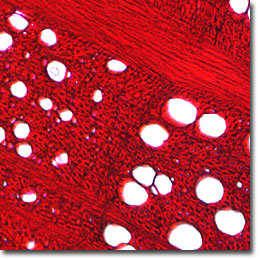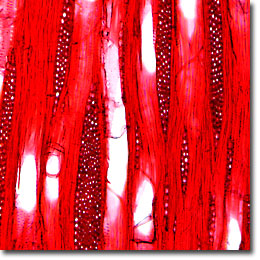The American Beech
The American Beech (Fagus grandifolia) is a hardwood tree found primarily in the eastern half of the United States and in southeastern Canada. This tree has a European counterpart, the Common or European Beech, which is widely spread among the forests of central Europe. The sapwood is a whitish texture, while the heartwood is usually white with a reddish to brownish tinge.

Cross Section

Radial Section

Tangential Section
The tree can grow to heights of 110 feet and has a dense, spreading, oval crown. Propagation occurs either by seed or by rooted suckers that the tree naturally releases. Legends, both fanciful and true, have often been inscribed in the smooth bark of the beech tree. American adventurer Daniel Boone carved this short message in a Tennessee beech: "D. Boone Cilled A Bar On Tree In Year 1760." Beech wood is used in charcoal production, railroad ties, and pulp. Veneer is used mainly for the manufacture of crates, baskets, and fruit containers and also to some extent for furniture and interior plywood. The tree is also useful as a fuel wood due to its high-ranking fuel value.
Microscopic examination of stained (iron-alum hematoxylin and safranin; see above) thin sections reveals a diffuse and porous wood having simple perforation plates with tyloses in the heartwood. Parenchymal tissue is abundant, and the rays are both simple and compound and unstoried. In general, vessels range from sparse to very numerous with inter-vessel pits being oval to long-elliptical in shape.